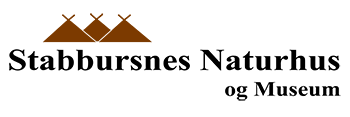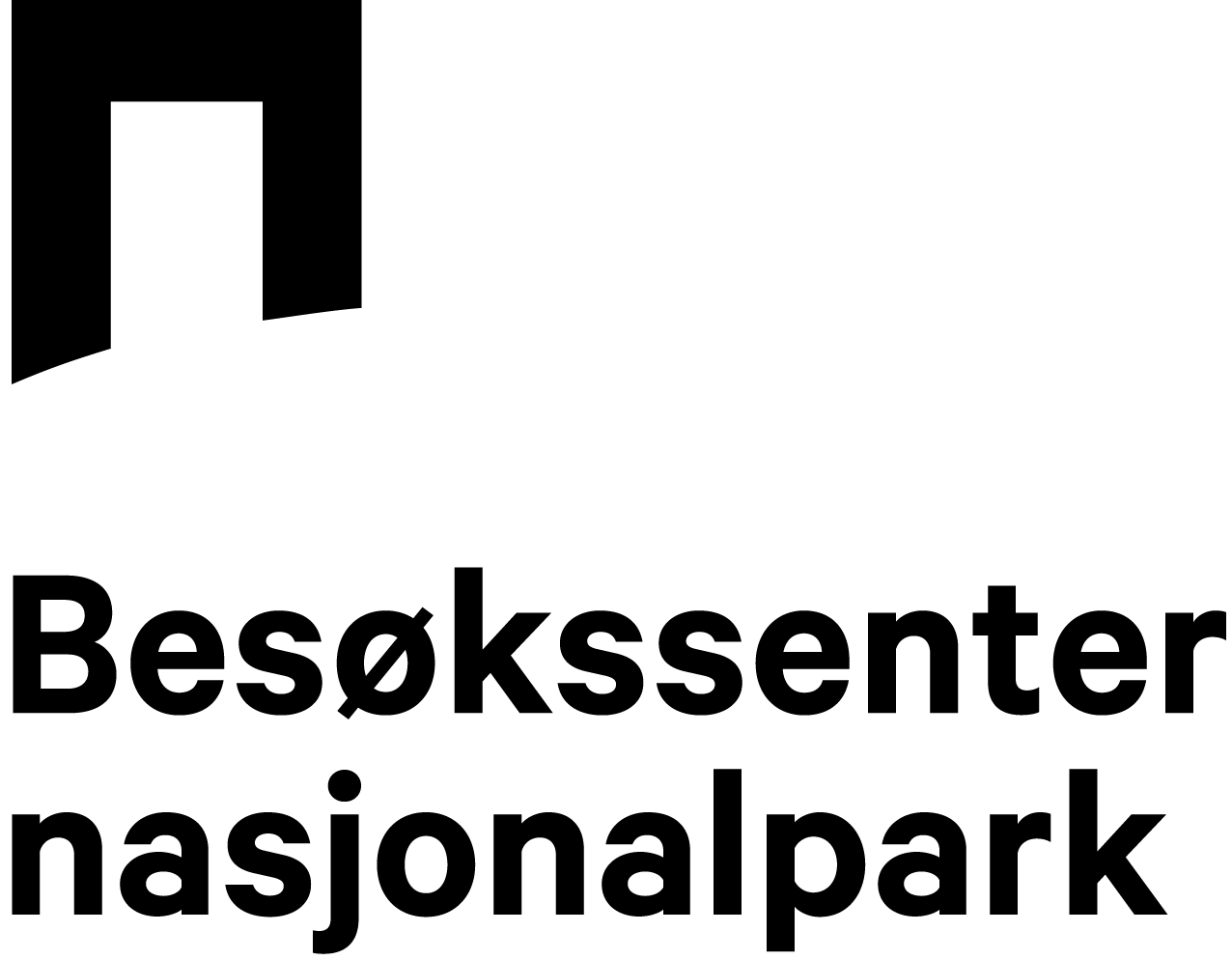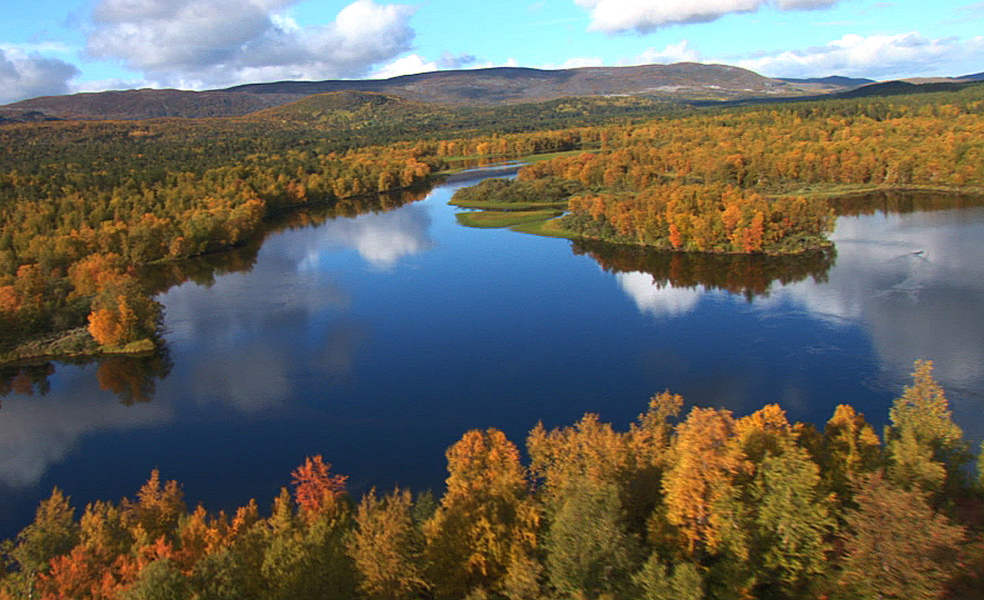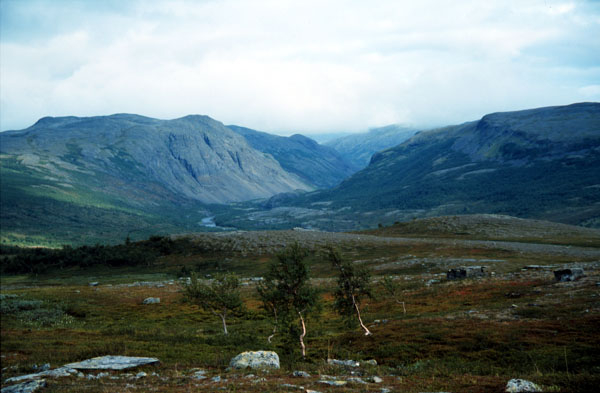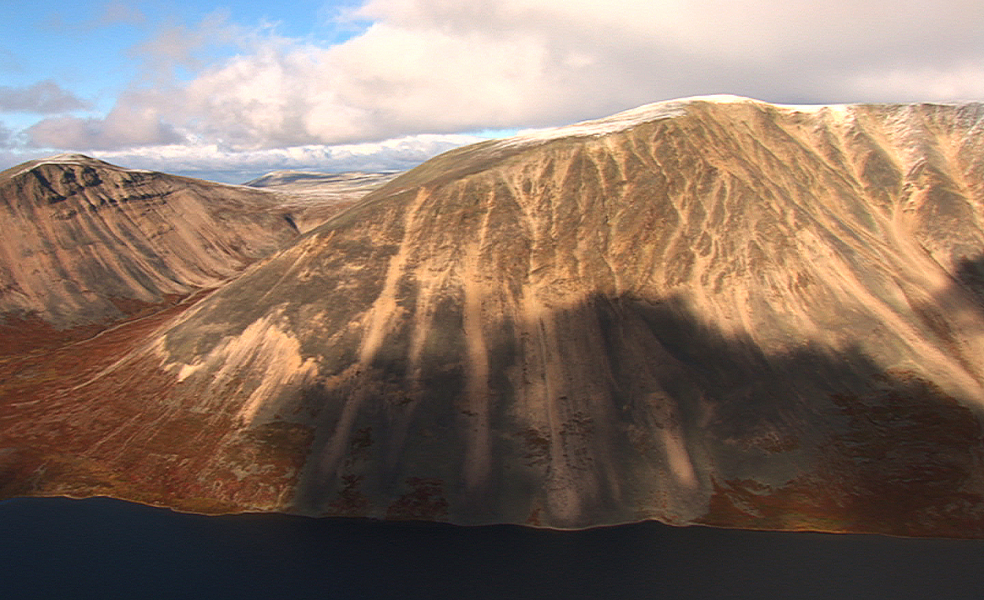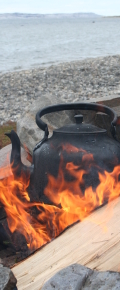Conservation objective
To preserve a large area of nature approximately free of technical intervention. To secure a biological diversity with its ecosystems, species and stocks. This means among others to preserve the northernmost pine forest in the world, various water systems, the mountain formation Gáisssene with its characteristic distinctiveness and geological deposits and cultural monuments.
Preserving the natural basis in the national park is important for the Sami culture and economic exploitation. The area can be used for reindeer husbandry, nature experience and performance of traditional and simple outdoor life with a small degree of technical facilitation.
Stabbursdalen national park is mainly located in Porsanger municipality, but a small part of the park’s northwestern corner resides in Kvalsund municipality.
The national park offers a diverse range of landscape types. In southwest, Stabburselva begins its journey down towards Stabbursnes, a stretch of ca. 60 km.
At the top of the Stabbursdalen is an open landscape with a string of birches around the river itself. Eventually the valley becomes tighter, with a steep hillside of lush birches. By Stabbursfossen the river valley opens and the river are becoming surrounded by pine forest.
The pine forest is the northernmost in the world and is characterized by low, bushy trees with an age up to 500 years. Several animal species have their northernmost extent in relation to the pine forest, including the Capercaillie, the Siberian Jay, squirrels and the Pine Grosbeak.
Rugged mountain peaks (Gáissene) predominate in the southeastern part of the national park. This mountain is sliding cover, i.e. fragments of large subsea discs that were pushed over the land some 400-600 million years ago. Several of the mountains are over 1100 meters above sea level, and are among the highest in Finnmark.
The national park has a pristine character with very few technical interventions. However, Stabbursdalen has been an important area of use for the coastal Sami population for generations. Traces of agriculture, hunting, trapping, and fishing can therefore still be found.
The national park area remains of great importance for reindeer husbandry, serving as a summer grazing area for reindeer.
The national park is adapted for simple outdoor recreation, with trails and open cabins/gammer (turf huts). You can park your car at the bird feeding site in Lombola. There are good opportunities for salmon fishing in the Stabburselva River and small game hunting in the area.
In a national park you are the nature’s guest
Go where you want, on foot or on skis. Spend the night in tents if you like – but remember cleaning up after yourself and take home garbage.
You can light a fire, but remember the general prohibition of bonfire in forest areas between April 15 and September 15.
You can pick berries and mushrooms. Hunting and fishing is allowed – but remember fishing and hunting licenses. Salmon fishermen: Remember disinfection of fishing equipment!
You can take your dog – but remember there is a dog chain restriction in the period 1. April – 20 August.
See also Stabbursdalen National Park’s page at Norway’s National Parks.
